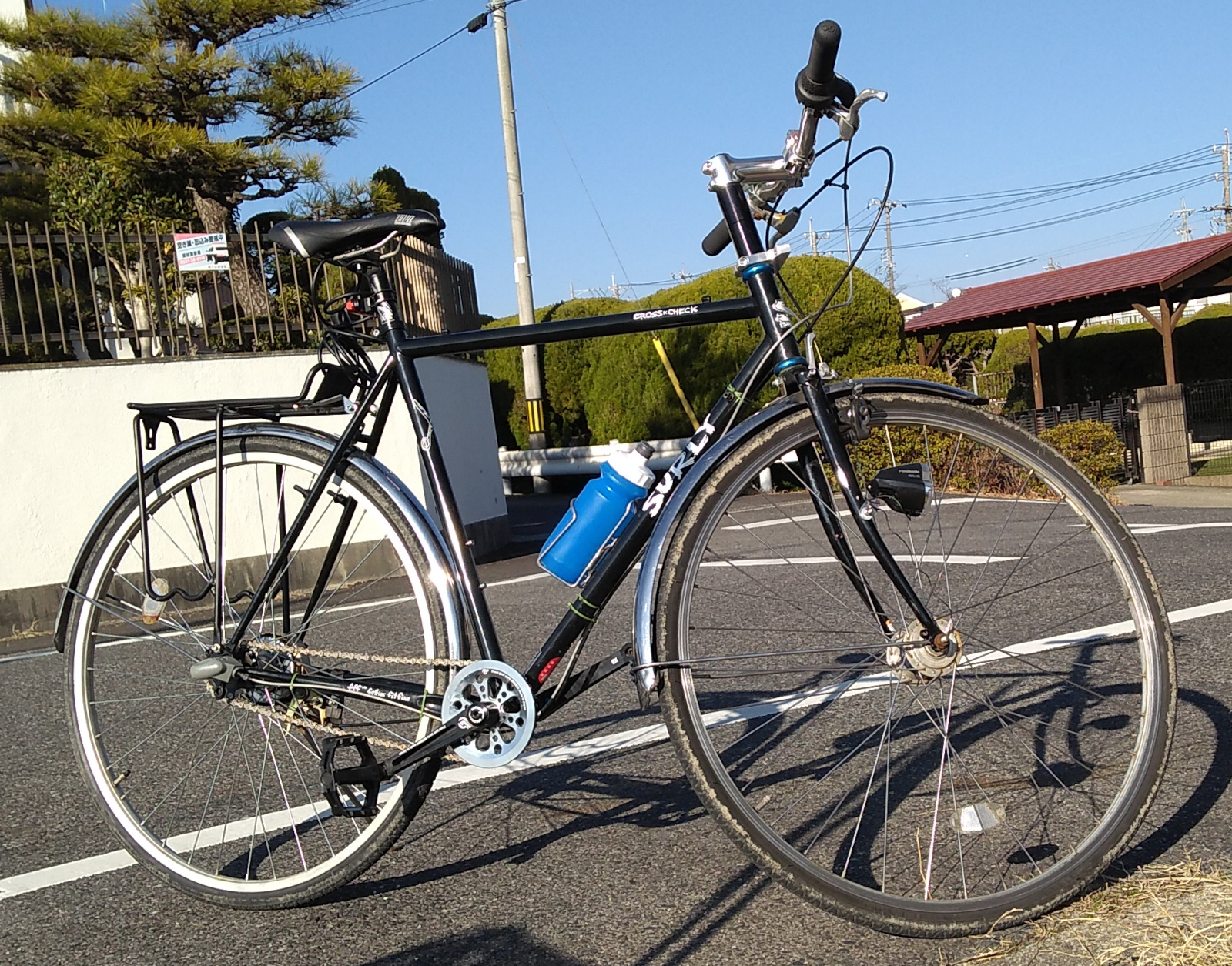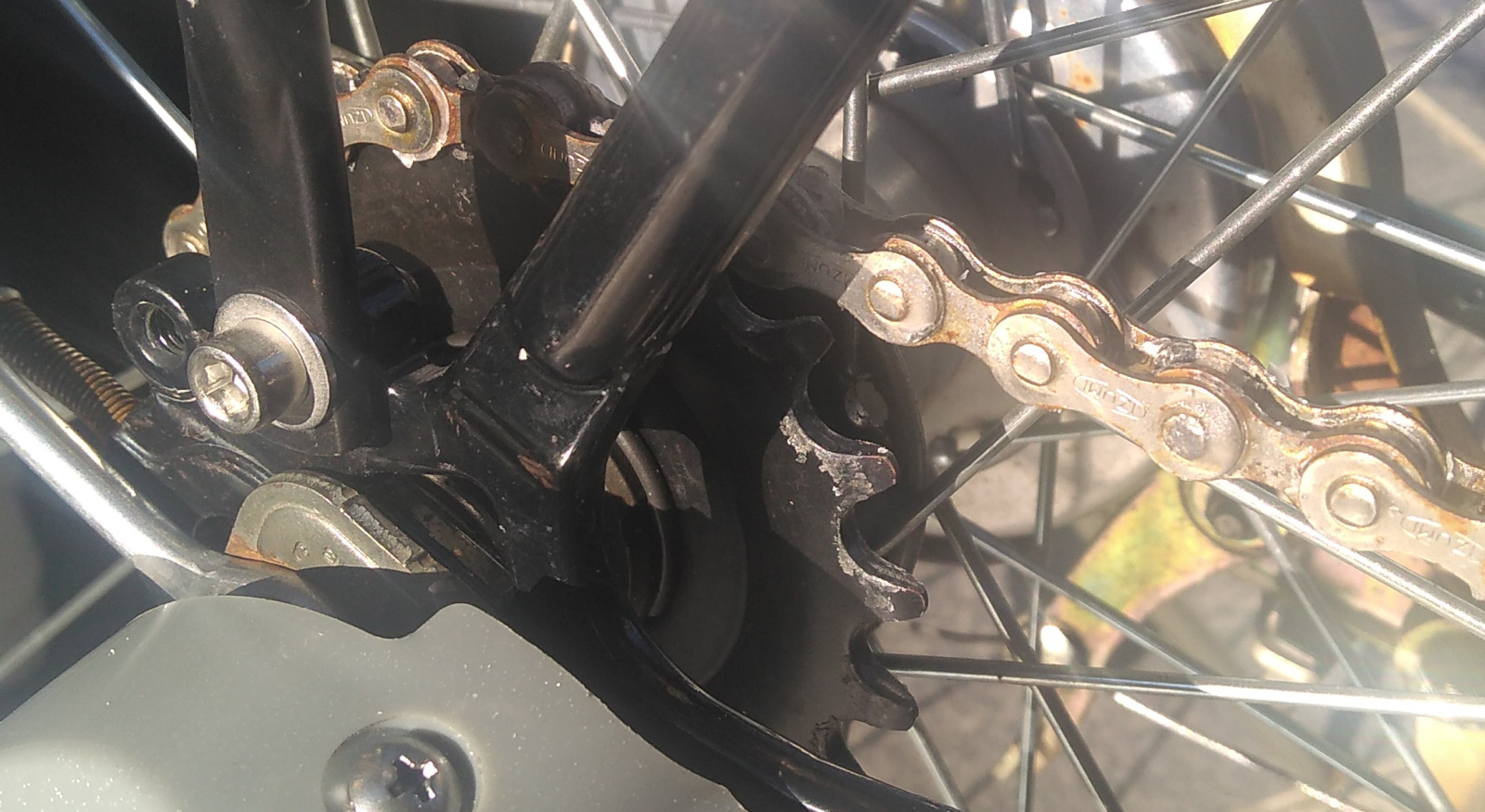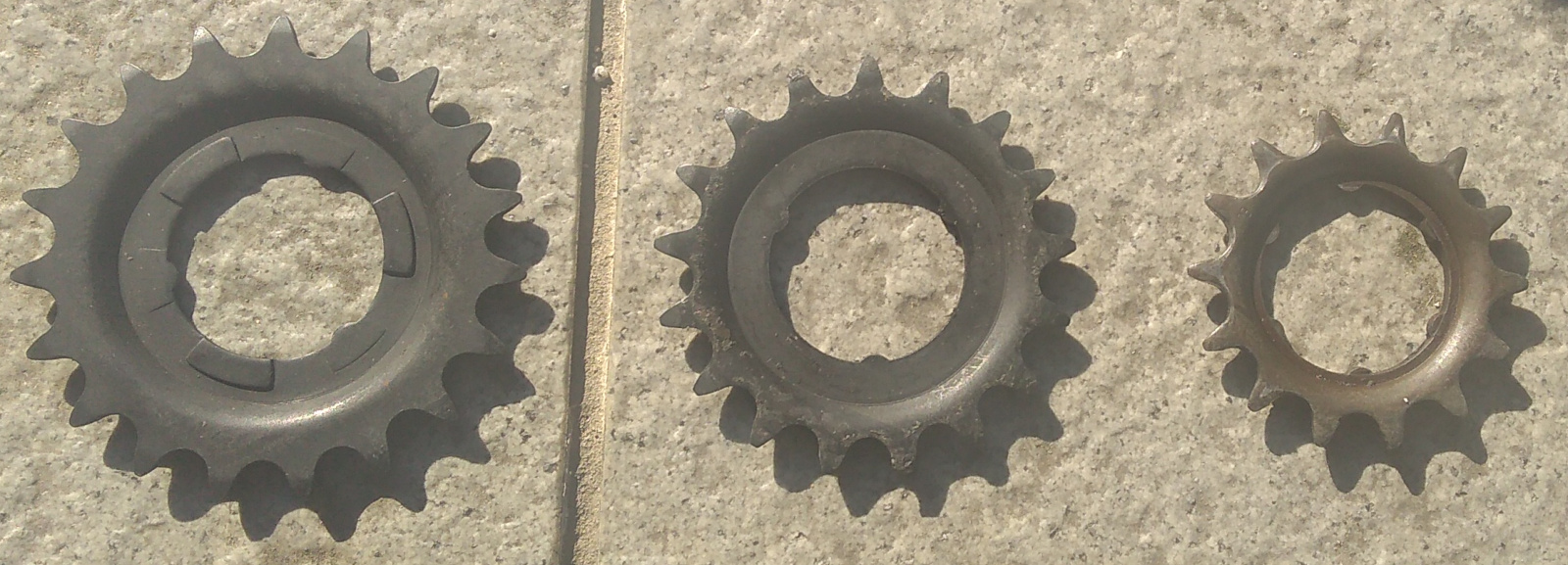Shimano Nexus 3-speed for hills
In March this year (2024), I’ll be making a journey to visit friends further to the west, beyond bicycle distance. They are cyclists, so I’ll be keen to take along a bike for local use, and that poses a thread-the-needle problem for my current stable of four steeds.
-
The Dahon K3 is a tiny folding bike that can be taken on the train with no problem, but it’s not meant to carry loads, and it’s not geared for hills.
-
The Surly Big Dummy cargo bike has been a joy on long camping excursions, but there’s no way to carry a bike of that size and weight on a train.
The baggage rules for Shinkansen lines west of Tokyo were relaxed in 2020 to permit luggage of no more than a total of 220cm along three sides. A normal bike squeezes under the wire when the front wheel and pedals are removed. So what of the “normal” bikes in the household?
-
The Dioss road bike recently had an overhaul to give it wider gears to better handle hill climbs. It would be great to take along, but it’s again not suitable for carrying much of anything, so camping would be out.
-
Then there’s the shopping bike …


This was originally a Bridgestone city bike with a step-through frame, bought new about 20 years ago (?) for my commute to the station. Last year I took a stab at giving it an overhaul, and it didn’t go well. At all: years spent out in the weather had taken their toll. The fittings of the bottom bracket were rusted solid, and I broke a wrench in an attempt to remove one of the pedals. I salvaged the handlebars, the wheels, and the rain guards, but the rest of it was given a ride to the salvage yard on the Big Dummy. I can only hope that the steel in it found its way into a nice set of kitchen knives or the fittings on a musical instrument somewhere.
In the interest of nostalgia, I was in need of a bicycle to hold the old handlebars and wheels together. I took my tale of woe to the local bike shop (Quest Nisshin), where the owner Yokoi Toshiaki took pity on my madness and marshalled a Surly Cross-Check frame, a headset to join the frame with the old handlebars, a crank suitable to drive the Shimano 3-speed hub from the Bridgestone, and the other bits and pieces needed to get it all back on the road. As a shopping bike.
It’s been a joy to ride. The old step-through frame was flexy and hard to push up hills. The Surly Cross-Check is also made of steel, and probably not much lighter, but it’s much stiffer and has geometry much better suited to my own. The experience was so good that I began to think the upgrade should be pushed a step further, with a replacement of the drive train. I mean, really. A premium gravel bike frame with just three speeds? Come on. Then one day, uh-oh, the rear hub began freezing up. Darn. Time to swap in a nice 8-speed Nexus hub! Or an 11-speed cassette and derailleur! And off to Quest I went, eager to explore possibilities.
As we thought it through, swapping in a new drive train was going to mean a new shifter, a new set of rear brakes, respoking of the wheel, maybe a new chain. Complicated. Yokoi-san asked to take a look at the frozen hub—and a few days later, he had it working smoothly again. He put up a couple of photos of the work on his website (scroll to the bottom and weep): basically it had just become packed with rust and sludge, and needed a good cleaning and regreasing.
So … the bike is still a three-speed. ☹️
By this time I was thinking forward to leveraging the train network for more ambitious camping excursions around the country. From mountains encountered on the first trips (to Hamamatsu, Shiga Prefecture, and the Sasado hot springs village), I had learned to appreciate the cargo bike’s bottom gears more than the speedy ones at the top. On the road between overnight stops, getting there is more important than getting there quickly. With the shopping bike still the likely platform for train+bike trips, it finally sunk home that the number of its gears was less of an issue than their range. And that’s when the lights finally went on.
I had never dismantled a 3-speed hub, and didn’t realize just how simple it is to swap in cogs of different sizes. Remove the wheel, pop off a snap ring, slot in the new cog, and reverse the steps. It’s easy enough that the bike can be set up for a given terrain. So how about those gearing options?
The original on the bike had 14 teeth, which turned out to be the steepest gearing available on the hub. Quest had a 21-tooth sprocket, which I’ve set on the bike for test rides on local hills. With a 33-tooth front chainring, it’s just a little steeper than the lowest gears on the cargo bike. Touring with a load will be possible with this configuration.


Into the bargain, I now have a range of other sprocket sizes to suit the mood of the day.


The drive train was a big item, but some more will be needed to get the bike in shape for touring, of course. The photo above shows the bike with a rear rack for panniers. The Bridgestone bike originally had a front basket, which I did move across, but recently removed in anticipation of adding a front rack and panniers. I may also look into replacing the steel rain guards with something less weighty. Really looking forward to taking this rig on an overnight trip when the weather warms up a little.